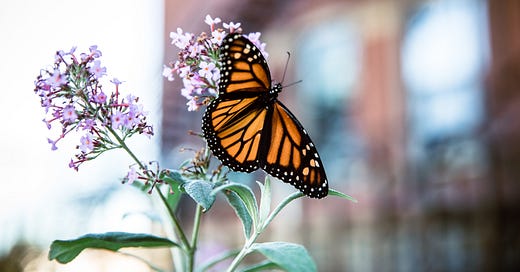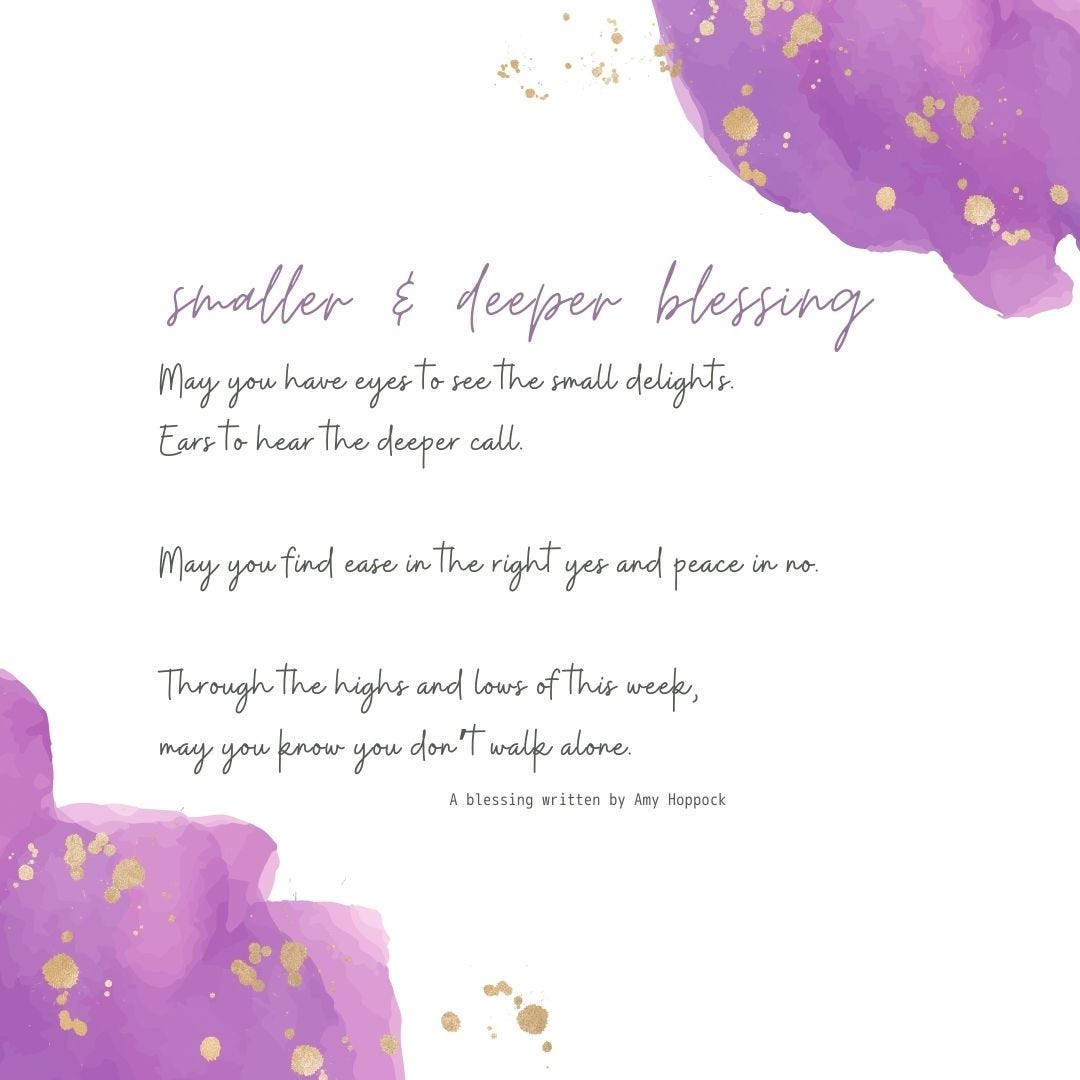We delight in the beauty of the butterfly, but rarely admit the changes it has gone through to achieve that beauty.

NPR reported this week “The Butterflies Are Back.”
Apparently, the population of monarch butterflies has been in sharp decline over the past decade. The article reported a 99% decline in the populations of monarch butterflies making their way through California for the winter from the ’80s. In the 80’ and ’90s, over a million butterflies made the migration. Last year the count was below 2,000. Let that sink in. From 1 million to less than 2,000 in our lifetime!
In the few years before last year, they had been counting an average of 30,000 butterflies making the migration. To everyone’s surprise, over 100,000 butterflies have been counted so far this year, and they count until December 5th.
Hope. They don’t know why this resurgence is happening or what it means. But there is hope! This year they have rebounded.
What happened to cause the numbers to increase so drastically? Did the behavior of the monarchs change? Did the 2,000 who made it to Mexico last year hold a conference and hatch a plan? Did they ask for help? Did they care for each other better? Did fractured groups come together and find common ground for the common good? What are the Monarchs trying to teach us? What can we learn?
Today is the first day of Advent. Traditionally the theme for the first Sunday of Advent is hope.
As I started thinking about hope, the news about the butterflies sparkled as a very present gift of hope. Hope is the expectation and firm belief that something desired will happen. Hope is closely tied to waiting. Hope is something yet to come, but not yet here. Between the desire and the fulfillment is hope. Hope is also a noun and a verb, an identity, and an action. Migration is lived example of hope. The butterflies leave the cold north flying on the wings of hope towards the warm mountains in Mexico.
I’ve done some research, and last year at this time, the news about the butterflies was sad and truly hopeless. 2,000 butterflies were counted down from a million. People were worried and sad about the future. This year, beyond all expectations, 100,000 (to date!!) have been counted. There is cautious optimism. There are more questions than answers. How did this happen? What happens next? What was hopeless is now hope-full.
Focusing on the monarch butterfly seems like a perfect way to start Advent 2021. The story of the monarch butterfly is more hopeful today than it has been for literally years. But it’s not done yet. We’ve seen how close to the edge they came, and somehow, miraculously, this year, they have come together and come back. There is a message for us in our fractured, fearful culture. The monarchs have something they want us to know. Will we listen? Will we let them guide us? Will we seize their hope and join their journey?
A Butterfly & Hope Blessing.
May the monarchs increase.
May we grow in hope as we watch and learn from them about transformation and hope-filled migration.
May we learn the lesson they are trying to teach.
As we live each day in hope-the desired for and not yet, may we, like the monarch butterfly, be bold to move to places of warmth and protection. May we be still until our hearts are warmed by the sun. May we submit to transformation and find our wings.
May our hope increase
Look for hope! (I made this Hope Scavenger Hunt a few months ago, you can print a copy here)
Learn more about butterflies. (Apparently, one of the best things we can do to help the butterflies is plant milkweed. I’m already plotting where I can add it to my yard in the spring!)
"Nature has given us a second chance ... But I do think we're in really dangerous territory," she said.
"The population has really never been so low as it has the last three years.
"I think this is really good reason to take heart that there might still be time to make a difference."
Pelton says if you live in the western U.S., you can help by planting native milkweed and flowers in your yard.
A small act that could give a big boost to the monarchs.
-MICHAEL LEVITT NPR The Butterflies Are Back
Recently Read:
Hildegard of Bingen: A Saint for Our Times: Herald of the Divine Feminine, Green Prophet, Church Reformer by Matthew Fox
Hildegard of Bingen is one of my favorite saints. In this book, Matthew Fox “introduces” her to modern writers, poets, etc. She was a bold, brave woman living in the 12th century; she spoke truth to power and has much to say to us today.
“As Rabbi Heschel teaches, humanity will be saved not by more information, but by more appreciation.”
― Matthew Fox, Hildegard of Bingen: A Saint for Our Times
A Timely Suggestion:
Wintering: The Power of Rest and Retreat in Difficult Times by Katherine May
This book is about winter, both the season and the season of our soul. She writes about cold, dark, and nesting. If winter isn’t your favorite season, you might enjoy this book. One of my favorite sections of this book she talked about learning to swim in the ocean in winter, it was super fascinating. (I’m not interested in joining her but to each their own…)
“Plants and animals don’t fight the winter; they don’t pretend it’s not happening and attempt to carry on living the same lives that they lived in the summer. They prepare. They adapt. They perform extraordinary acts of metamorphosis to get them through. Winter is a time of withdrawing from the world, maximising scant resources, carrying out acts of brutal efficiency and vanishing from sight; but that’s where the transformation occurs. Winter is not the death of the life cycle, but its crucible.”
― Katherine May, Wintering: The Power of Rest and Retreat in Difficult Times

I try and pay attention to words or phrases that stand out to me in my reading and listening. There is a spiritual practice called Florliledgium that collects short, interesting pieces {words that “sparkle” up} and put them together. This is kind of like that. Watching for things that sparkle. Gathering them and seeing how they work together and what message, mantra, or new idea might arise.)
A Practice:
Read slowly.
Notice if a word or phrase stands out to you.
How do the words make you feel?
Is there an invitation?
(I’m sharing in italics the lines that stand out to me in these passages. Maybe it’s the same, or maybe it’s different, there is much food for thought in each of these passages)
“Our mission is to plant ourselves at the gates of Hope — not the prudent gates of Optimism, which are somewhat narrower; nor the stalwart, boring gates of Common Sense; nor the strident gates of Self-Righteousness, which creak on shrill and angry hinges (people cannot hear us there; they cannot pass through); nor the cheerful, flimsy garden gate of “Everything is gonna be all right.” But a different, sometimes lonely place, the place of truth-telling, about your own soul first of all and its condition, the place of resistance and defiance, the piece of ground from which you see the world both as it is and as it could be, as it will be; the place from which you glimpse not only struggle, but joy in the struggle. And we stand there, beckoning and calling, telling people what we are seeing, asking people what they see.”
-Victoria Stafford in a book of essays called: The Impossible Will Take Awhile
“To get better at wintering, we need to address our very notion of time. We tend to imagine that our lives are linear, but they are in fact cyclical. I would not, of course, seek to deny that we gradually grow older, but while doing so, we pass through phases of good health and ill, of optimism and deep doubt, of freedom and constraint. There are times when everything seems easy, and times when it all seems impossibly hard. To make that manageable, we just have to remember that our present will one day become a past, and our future will be our present. We know that because it’s happened before. The things we put behind us will often come around again. The things that trouble us now will often come around again. Each time we endure the cycle, we ratchet up a notch. We learn from the last time around, and we do a few things better this time; we develop tricks of the mind to see us through. This is how progress is made. In the meantime, we can deal only with what’s in front of us at this moment in time. We take the next necessary action, and the next. At some point along the line, that next action will feel joyful again.”
― Katherine May, Wintering: The power of rest and retreat in difficult times
“The tree is waiting. It has everything ready. Its fallen leaves are mulching the forest floor, and its roots are drawing up the extra winter moisture, providing a firm anchor against seasonal storms. Its ripe cones and nuts are providing essential food in this scarce time for mice and squirrels, and its bark is hosting hibernating insects and providing a source of nourishment for hungry deer. It is far from dead. It is in fact the life and soul of the wood. It’s just getting on with it quietly. It will not burst into life in the spring. It will just put on a new coat and face the world again.”
― Katherine May, Wintering: The power of rest and retreat in difficult times








